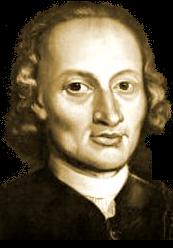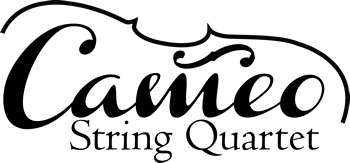Today Canon in D is a favorite at weddings, but little is known about the Canon.
Was it written for a wedding? Some scholars speculate the Canon was written for Johann Christoph Bach’s wedding, a brother to J. S. Bach. After all Pachelbel was a friend of the J.S. Bach’s family and a music teacher for his oldest brother Johann Christoph Bach. Pachelbel, and other friends and family provided music for the occasion. But most scholars think this theory is unlikely.
We don’t know when it was written! The Canon is thought to be written around 1680 but the first known publication appears in 1919 as part of a compilation of Pachelbel’s chamber music. It lay in obscurity until 1970 when a San Francisco classical music station played a 1968 recording and became inundated by listener requests.
From the 1970’s to today it has risen to the level iconic wedding music. Actually the first recording was by Arthur Fiedler in 1940, but did not capture the imagination of the public until 1970. Many recordings and arrangements have made it pervasive in our culture including pop songs, movies, advertisements, etc.
What is a Canon? It is not referring to a very big gun. It is a musical canon because, as originally written, three violins play the same music, each starting sequentially two measures apart. Pachelbel’s Canon is a pattern is played over a “ground bass” which originally was the cello part with its famous eight notes repeated 28 times. J Well, at least it is famous to cellists.
You may know musical pattern as a “round”, such as the children’s songs “Row, Row, Row Your Boat” and “Frère Jacques”.
Because there are somewhat strict rules or a norm about how this music is rewritten, the name canon applies. The term “Canon” is based on the Greek referring to a law or norm. Some religious orders refer to biblical canons as religious rules. It wasn’t until the 16th century did the word “canon” begin to be used to describe the strict, imitative texture created by the repetitive musical procedure as seen in Pachelbel’s Canon.
It’s easy to be distracted by the tight harmonies and the three melodious violin tunes, but Pachelbel’s approach to writing the music was almost mathematical. He uses an ostinato (the same bass line repeated over and over again) and a canon (the same music repeated by the violin parts, in a round) to construct his piece. Listen for the same music being passed between the violins.
 Who is Pachelbel? In his lifetime, Johann Pachelbel was renowned primarily for his organ and other keyboard music, whereas today he is also recognized as an important composer of church and chamber music.It is no wonder he had such good compositional technique: Pachelbel wrote more than 500 pieces over his lifetime. He was a prolific organist in his hometown of Nuremburg, and even taught the man who became Bach’s teacher. Despite the sheer volume of his output, there’s still no system to number all of his works.
Who is Pachelbel? In his lifetime, Johann Pachelbel was renowned primarily for his organ and other keyboard music, whereas today he is also recognized as an important composer of church and chamber music.It is no wonder he had such good compositional technique: Pachelbel wrote more than 500 pieces over his lifetime. He was a prolific organist in his hometown of Nuremburg, and even taught the man who became Bach’s teacher. Despite the sheer volume of his output, there’s still no system to number all of his works.
Only Musikalische Ergötzung—a collection of partitas published during Pachelbel’s lifetime—is known, apart from a few isolated pieces in manuscripts. The Canon and Gigue in D major is one such piece. A single 19th-century manuscript copy of them survives, Mus.MS 16481/8 in the Berlin State Library. It contains two more chamber suites. Another copy, previously in Hochschule der Künste in Berlin, is now lost.
We hope you enjoyed this Pachelbel Canon in D blog. It is lovely and fun music. If you would like this at your wedding, we would love to play it. Here is a link to hear a sample of Canon by Pachelbel performed by the Cameo String Quartet.

